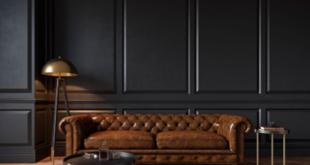You can suggest subway tile when your clients want to make a clean and timeless statement with their kitchen backsplashes or bathroom walls. You can twist them by playing with the layout and adding patterned insets or brushed nickel hardware.
The standard, glazed, horizontally stacked subway tiles are what many people picture when they think of subway tiles. But there are many other options for your customers to consider.
Versatility
Unlike other popular home decor elements like shiplap and barn doors, which are more taste-specific, the popularity of subway tile has yielded a variety of colors, patterns, finishes and size options. This allows homeowners to incorporate it into their homes, whether they prefer a modern or turn-of-the-century inspired aesthetic.
Although most people associate subway tile with the sleek surfacing solution that first emerged in New York City subway stations in the early 20th century, it has become a design staple for commercial and residential interiors. The three-by-six-inch tiles are a timeless and versatile material for walls and floors, particularly when combined with different layout patterns, grout colors, and other decorative elements.
While most homeowners will install the traditional horizontal pattern, a simple herringbone or chevron arrangement can add depth and visual interest to a room. Likewise, subway tiles stacked vertically have a unique contemporary look that elongates the perceived height of a bathroom wall.
While some home designers might think that a subway tile layout would look out of place in a farmhouse kitchen, the truth is that the tiles can complement a rustic and industrial style just as well as a more contemporary one. The tile’s neutral palette and geometric lines can work nicely with Edison bulbs, SMEG appliances and classic country furnishings without looking at odds with the other more rustic or rustic elements of the space.
Durability
When you choose subway tile, you’re choosing a durable option that will stand the test of time. It’s also easy to clean and works well in various styles. It’s a great choice for bathrooms and kitchen backsplashes.
While subway tile first became popular as a sleek surfacing solution for utilitarian urban spaces, it’s since evolved into a design staple that works well in many different settings. Its versatility and timeless look make it a great choice for kitchens, bathrooms, laundry rooms, and mudrooms.
It is best known for its classic 3″ x 6″ white ceramic tiles set in a horizontal arrangement, but you can also find them in a wide range of colors and several tile arrangements. The simplest structure is to lay out the tiles in a running bond pattern, which involves lining up each long side of a tile with the short end of the adjacent tile and matching up their ends.
If you want something more unique, arrange them in herringbone or stacked patterns. Just be sure to plan your layout carefully before beginning the job. Otherwise, you might run into a lot of tiling problems. For example, if you’re laying out herringbone tile, create a modular layout that includes equal divisions of the larger tiles. If you do, the pattern will look more balanced.
Easy to Clean
When tiling the kitchen backsplash or shower space, it is important to use materials that will be easy to clean and maintain. Subway tiles are a great choice because they have a sleek, smooth surface that is easy to wipe down.
In addition, they also come in a wide variety of colors and finishes that can complement any design style. While traditional white subway tiles are still popular, other colors can add eye-catching color to the room. You can even find textured subway tiles to add a more dynamic touch.
Although the original subway tile debuted in New York City subway stations, it is now used in various home interiors. Its sleek surface and narrow grout lines make it perfect for kitchen backsplashes or bathroom walls. These tiles can also be used in other house parts, such as a foyer or mudroom.
While subway tiles are usually glazed, there are also some porcelain options. Porcelain is an excellent material for backsplashes because it is non-porous and moisture-resistant. It is also available in various sizes and patterns, making it ideal for almost any home. Choosing the right size and tile pattern will help create a stylish, functional, and durable kitchen backsplash or bathroom wall.
Cost
Subway tiles are great for kitchen backsplashes and bathroom shower walls. They are affordable and can be installed in various ways to create unique designs. You can also find them in a wide range of colors and finishes. Some are matte, while others have a glossy finish and are available in textured and colorful options.
Although the classic white subway tile is the most popular option, other color and layout choices can add a more personalized touch to your home. For example, you can experiment with a chevron or herringbone pattern to add visual interest to your walls. Another great way to use subway tiles is in a vertical orientation, which elongates the appearance of your room and adds depth to the space.
First introduced in NYC subway stations in the early 1900s, these simple 36-inch ceramic tiles are now a timeless design staple for bathrooms, laundry rooms and kitchens across America.
Known for their durability and versatility, subway tiles are easy to clean and can be used in many ways. They’re glazed and stain-resistant, so they easily resist grease, food splatters and soap scum. A quick rinse with warm water is all it takes to keep your kitchen or bathroom spotless!
 Time News Global Business, Technology, Entrepreneurship News
Time News Global Business, Technology, Entrepreneurship News




